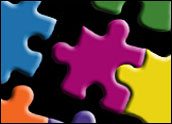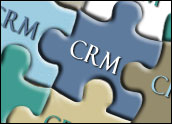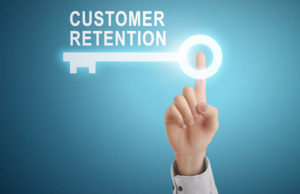
This story was originally published on Jan. 30, 2009, and is brought to you today as part of our Best of ECT News series.
It may be as sexy as grandma’s underpants, but data is the foundation upon which everything else is layered. Without the right support underneath, the fat will roll over your margins, creating an unsightly, unseemly, unprofitable business bulge.
“While it sounds a little boring, managing data as the key strategic asset has become a corporate imperative,” Jeff Gilleland, SAS customer intelligence product marketing manager, told CRM Buyer. “In a world where the volumes of information are exploding, how well your company harnesses this emerging asset can mean the difference between success and failure.”
It’s Who You Know
Companies used to think data was just bits and bytes of facts to be fed into silos. Now it is the collection of facts attributable to a single breathing customer that is key to business survival. The old adage has doubled around: If you don’t know the Whos in your customer data base, you’ve got nothing at all.
“In any CRM initiative, it is vital to have a central repository — a single source of truth — for key customer data,” Dan Byrnes, vice president of industry product strategy at Oracle, told CRM Buyer. “For example, communications service providers strive to have a complete picture of each customer across services — including wireless, wireline, data, etc. This improves customer service and helps facilitate creation of effective and personalized marketing campaigns.”
But wait, even if you know that the intelligence you have on each customer is sound, you need to realize that conditions change quickly these days; otherwise, you’ll get fooled. “Don’t let customer relationship data undermine customer relationships,” Gary Hamilton, senior manager at Acumen Solutions, told CRM Buyer.
The popularity of social networking has spurred CRM developers to add social networking features and Web 2.0 mashups that can greatly aid you in knowing your customers. Hamilton said mining network data can provide great insight with a couple of caveats:
- Social network data is self-reported, so GIGO (garbage in, garbage out) takes on new meaning. While self-reported information can reveal preferences, interests and perceptions, it is not the same as hard data on orders, purchases or budgets.
- Data is data and relationships are relationships — it is much easier to track who knows whom than how much someone values a relationship. Identifying influencers and decision makers is key to understanding your customers.
In other words, customer data is only the beginning stage of customer relationships; the need to get up close and personal still remains.
Snuggle, but Don’t Snooze
“The business’s future success now depends on how intimately you understand your existing customers in order to find ways to preserve and grow revenue as much as possible,” John Nicoli, managing director at Trillium Software, told CRM Buyer.
Efforts to get closer to customers are leading to a new array of best practices in customer data management. John Ragsdale, vice president of Research at SSPA, a large and influential industry trade group for technology service and support professionals, said the following are the latest trends:
- Dedicated account managers. A growing trend in tech support is providing dedicated technical account managers (TAMs) to customers. TAMs act as the customer advocate, becoming intimately familiar with the business problems and challenges of each account, and working with development and professional services to leverage technology to best solve these customer challenges.
- Communities of interest. Technology companies today understand the importance of an ecosystem of partners and customers to share best practices, training information, and tips and tricks for receiving the greatest ROI. In 2007 and 2008, online communities and discussion forums have become a common feature for Web self-service sites, with support techs acting as moderators to keep discussions flowing and on track.
- Remote and proactive support. A major step toward moving beyond a break-fix mentality is getting out of the cycle of failure and repair. Remote diagnostics, proactive monitoring and remote support have all helped to eliminate problems from occurring and minimize downtime when problems can’t be avoided. By minimizing service interruptions, support teams are enabling customers to focus on getting value from their technology investments.
In essence, you should massage the data to find ways to serve your customer and increase sales based on your customer’s actual needs but you can only do that when you can clearly see what those needs are and how they are changing.
“It’s important to have good visibility to be able to accurately predict your business,” Brad Wilson, general manager of Microsoft Dynamics CRM, told CRM Buyer. “If you don’t have visibility, you might misallocate resources which will help you get more out of your marketing resources.”
Economy? What Economy?
To far too many companies, this news of customer intelligence rather than mere data collection is, well, news. The prevailing thought is that realigning data in such a way is a prudent response to a faltering economy. In fact, a bad economy does bring problems to light faster, but the problems were already live and quickly brewing to the surface.
“Data quality problems exist regardless of the state of the economy,” said Trillium’s Nicoli. “No matter how well things are going for your company, the reality is bad data infiltrates your organization from multiple external sources located all over the world. It compounds itself, negatively impacting business operations and transactions while introducing great risk to your company.”
There are additional obstacles in a bad economy; however, that deepen the danger.
“Data challenges occur in any economy, yet in a recession, companies experience more stringent oversight and compliance demands,” said Nicoli. “In growth times, mistakes and operational inefficiencies are often overlooked. But in this current climate, organizations are under more pressure to ‘get it right’ while optimizing business transactions and operational efficiencies.”
The only way to do all this effectively is to turn to your existing data for a 360 degree view of your customer. “But if you don’t have confidence in the accuracy of the data, you can’t leverage it,” explained Nicoli. “As a result, good data quality is not a ‘nice to have’ anymore, it’s a necessity, and will greatly impact the success of your business.”
Baby Steps and Big Leaps
So you have all this customer data tucked away in everything from contact managers and social networks to databases in the SaaS cloud. What to do first to bring it all together?
“Understanding your data and capturing that understanding as metadata is first,” John Wilmes, chief technical architect, communications sector, at Progress Software, told CRM Buyer. “A common reference model that supports semantic as well as syntactical definitions provides a solid foundation and represents a best practice in this area.”
Next comes change management.
“Managing change to both data and metadata is the next challenge, and it usually begins the day after the model is formed,” said Wilmes. “Change is inevitable, so the common model must support change management, impact analysis and annotation.”
The third step is integration.
Integrating data from multiple, disparate application interfaces and databases requires successful metadata management and change management. Wilmes said a common model that can “generate flexibly deployable services in a variety of implementation technologies” can go a long way toward meeting this challenge. No one thinks the process is easy.
“In today’s Enterprise 2.0 era, those data sources span functional areas like finance, manufacturing, sales, marketing, and shipping, and also span corporate boundaries to the cloud, where SaaS applications, outsourced functions, and web data sources are emerging,” Mike Pittaro, cofounder of SnapLogic, an open source data and SaaS integration company, told CRM Buyer. “Unlocking the full value of an enterprise’s customer data requires a data integration strategy that can bridge all possibilities.”
The fourth step is to review all of the above for compliance and regulatory issues.
“CRM data intensifies these issues because it is more dynamic, more variable and more voluminous than most other domains,” explained Wilmes. “Its requirements for privacy and accuracy often carry legal consequences. Best practices for CRM data can be critical for the long-term health of your enterprise.”
Last, but certainly not least, prep the data for analytics.
“Companies are incorporating new data quality technologies to cleanse data which involves eliminating duplications, creating both customer and household views, creating a comprehensive view of each customer’s product ownership and creating a single version of the truth,” said SAS’ Gilleland. “These steps are critical because all meaningful customer intelligence begins with high-quality customer data that is ready for analytics.”
Like granny’s panties, if the right foundation isn’t there, everything’s going to get all loose, jiggly and ugly pretty quick.
“Businesses are looking at the relationships between customers, business goals and their data differently than in the past and are moving quickly to improve the quality of internal data for decision-making,” said Nicoli. “There is a greater sense of urgency now to ensure the operational and transaction data is correct. And, if you’re not building a strong data quality strategy now, you can bet your competition is.”





















































